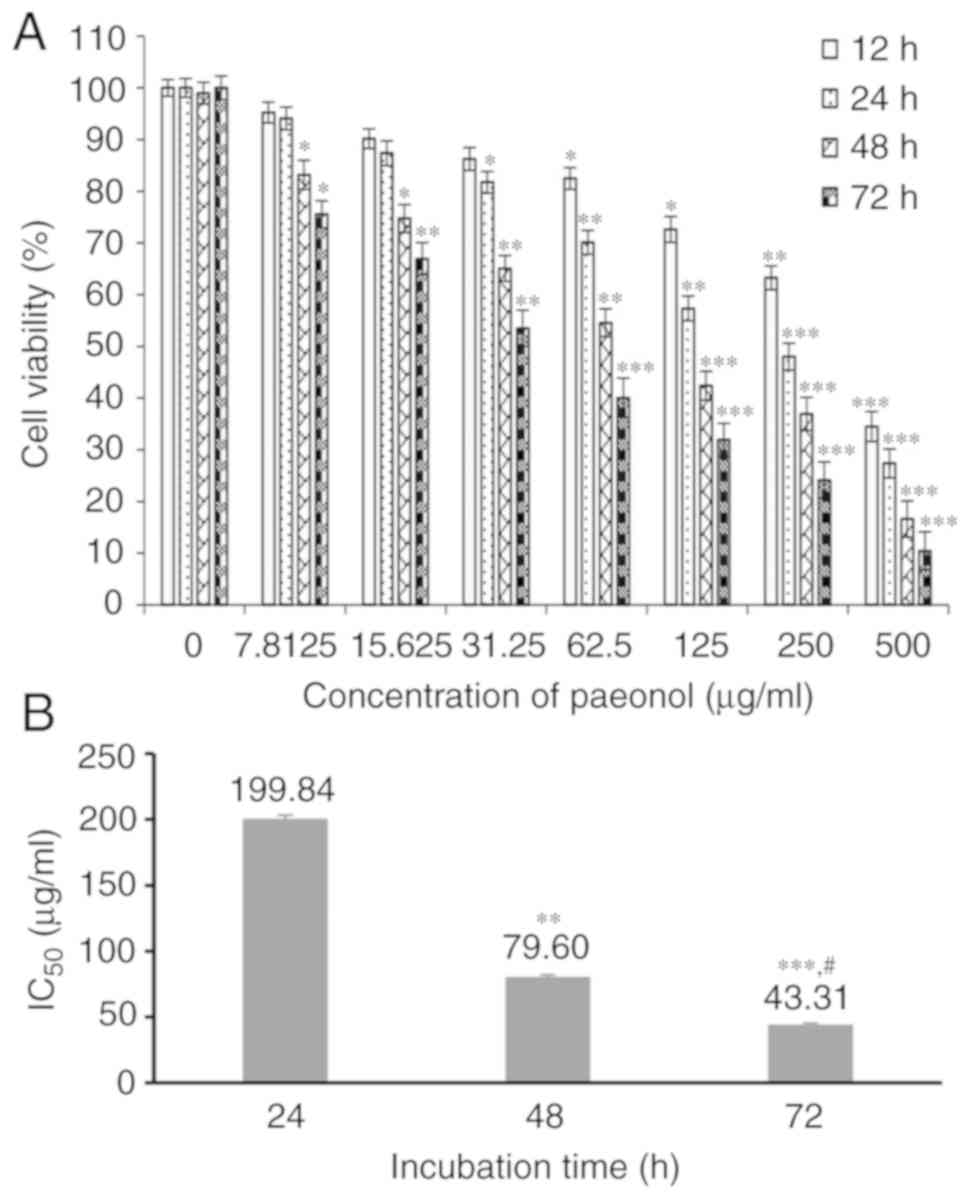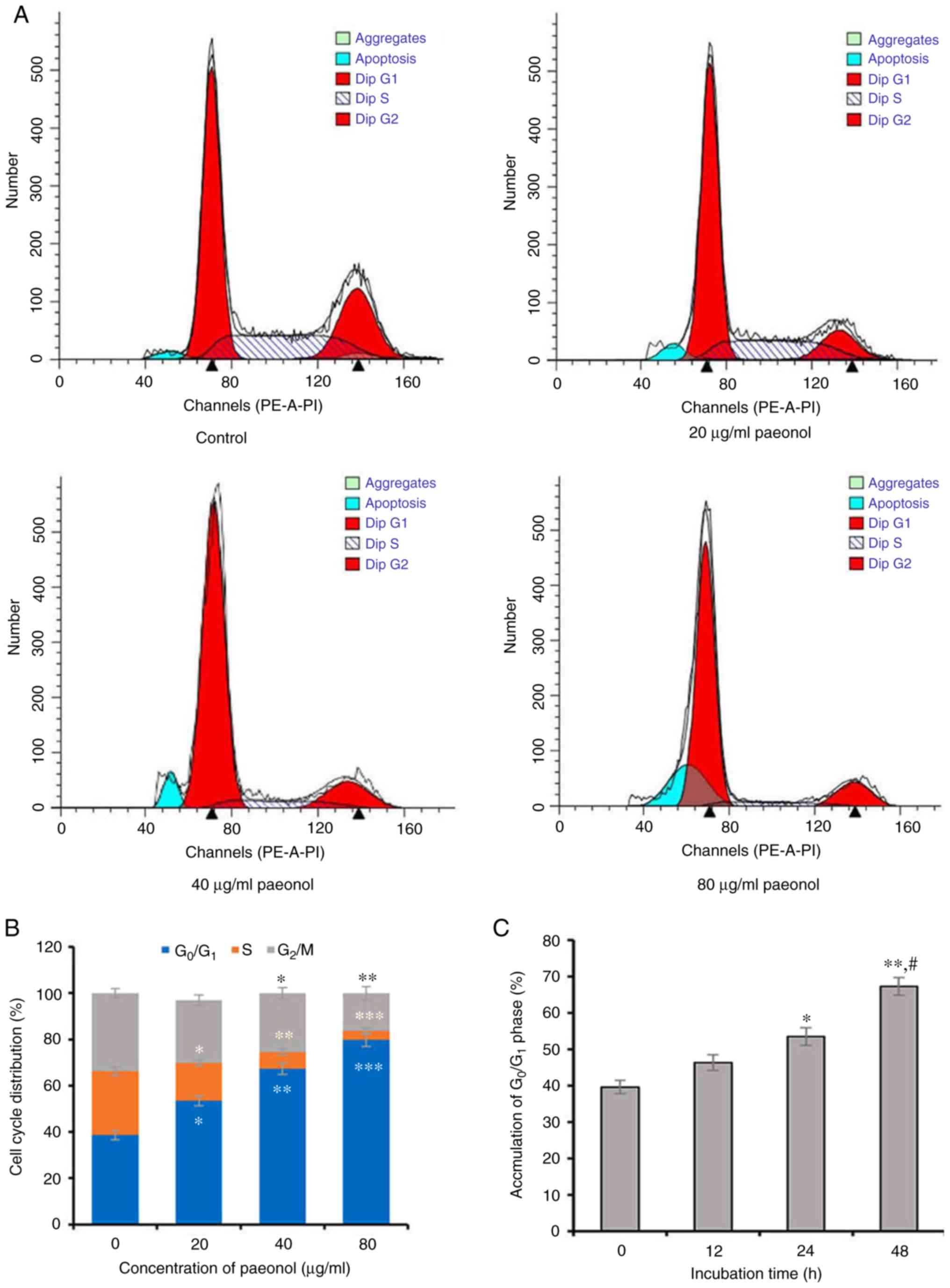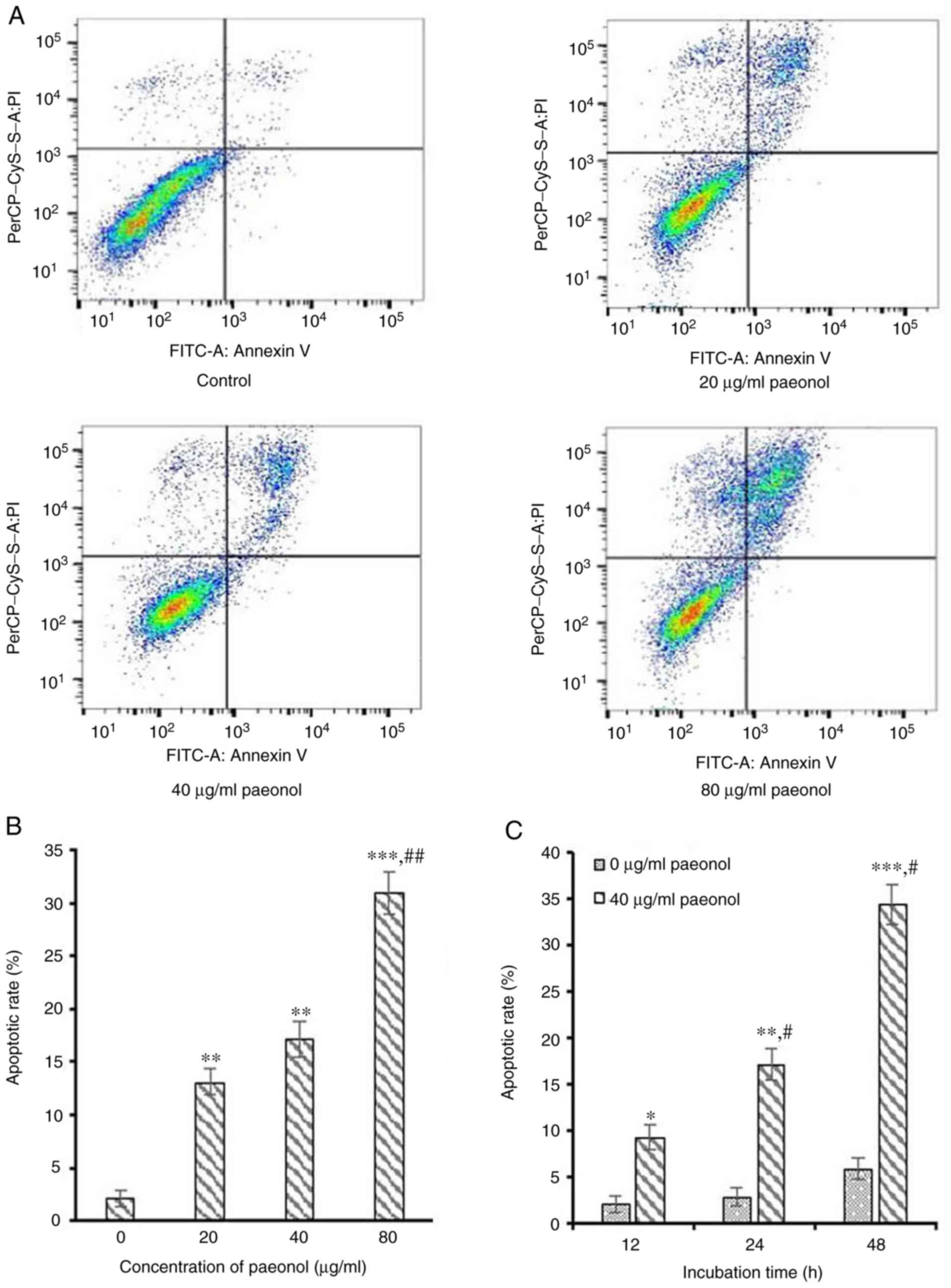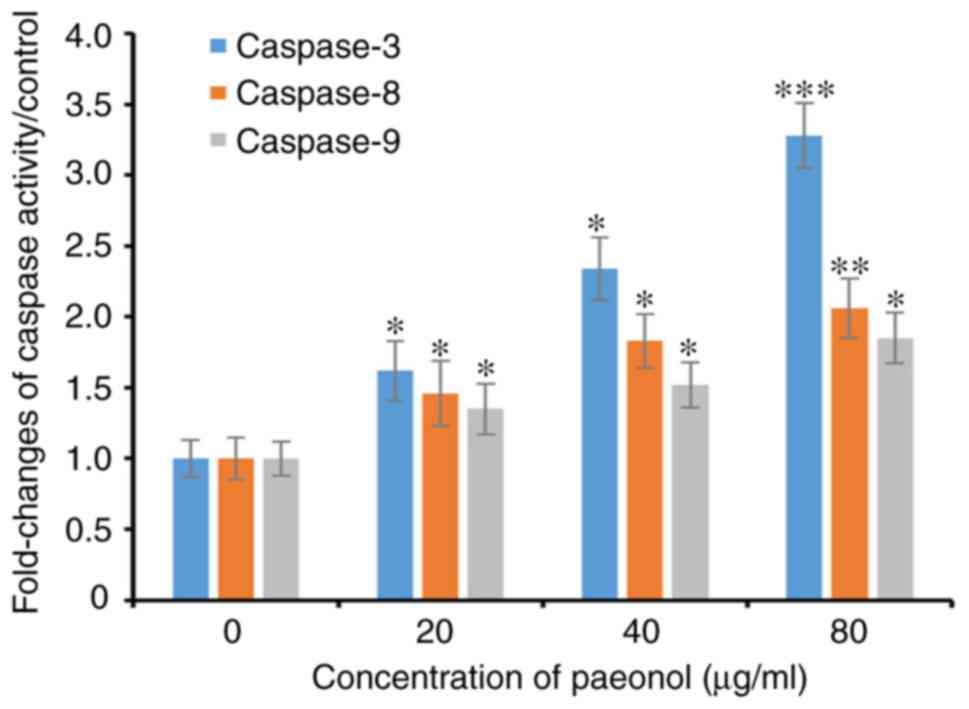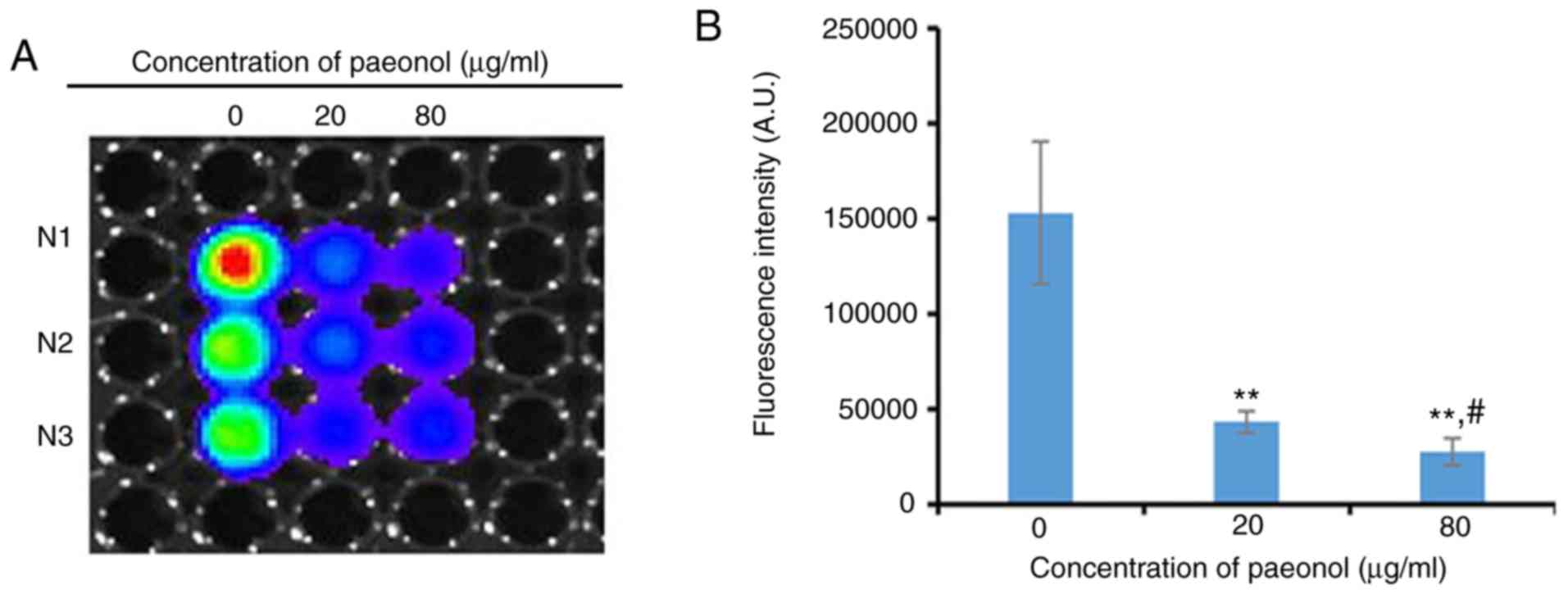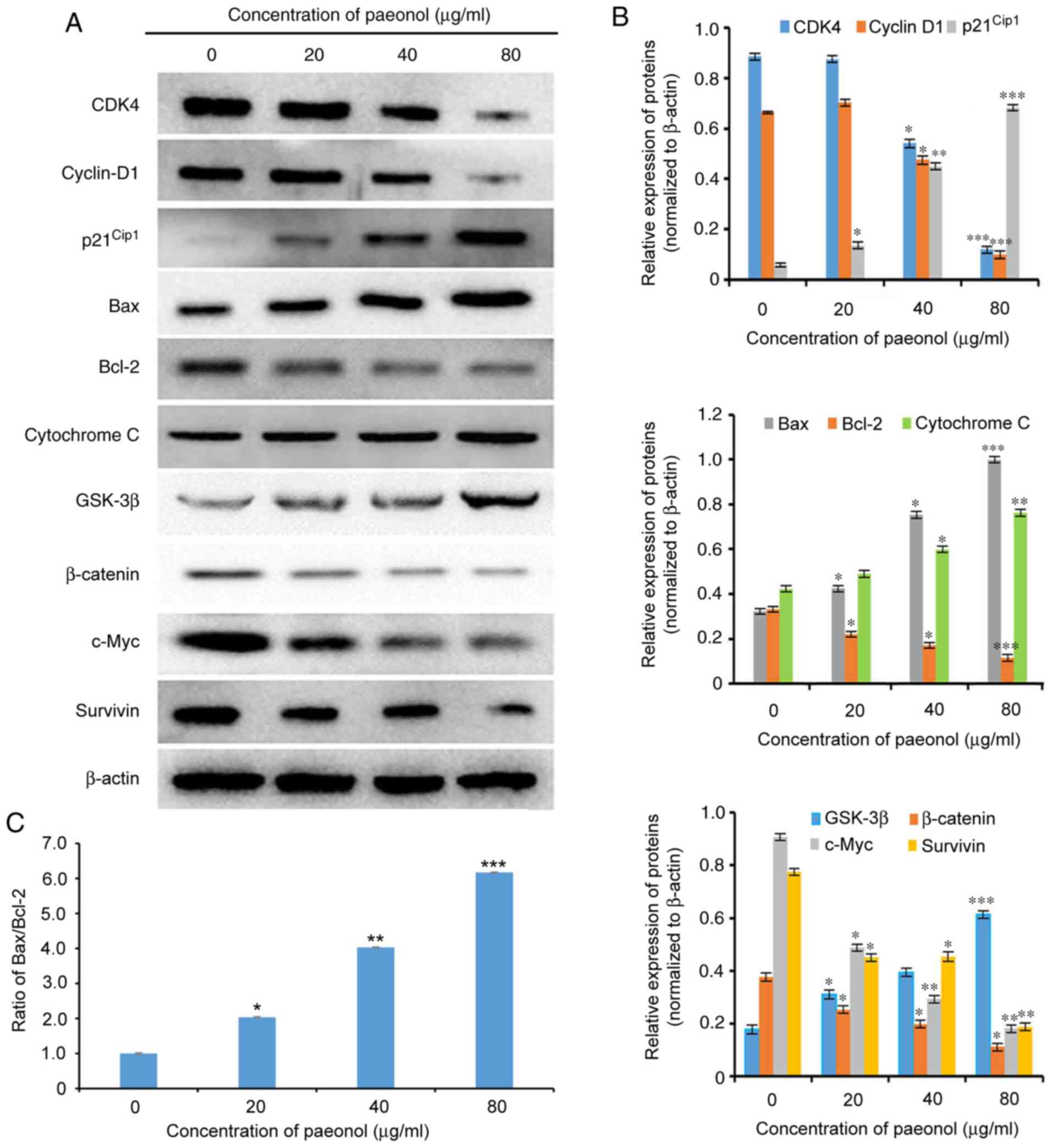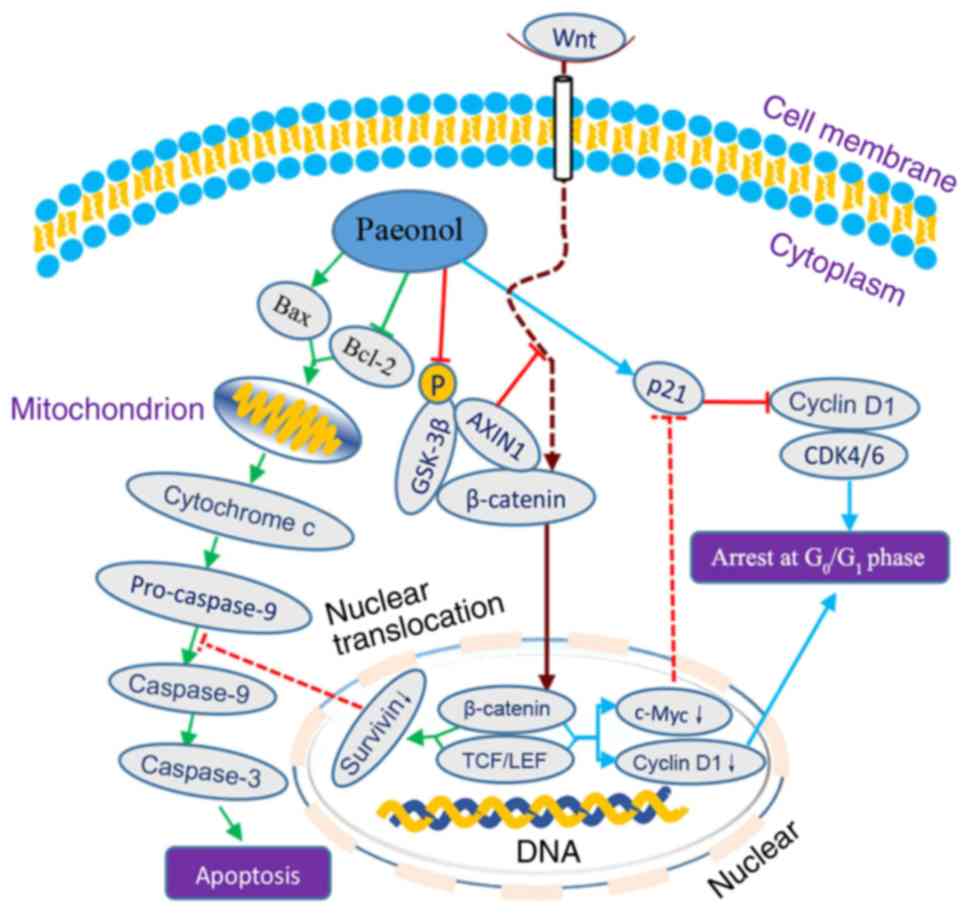|
1
|
Nguyen MN, Choi TG, Nguyen DT, Kim JH, Jo
YH, Shahid M, Akter S, Aryal SN, Yoo JY, Ahn YJ, et al: CRC-113
gene expression signature for predicting prognosis in patients with
colorectal cancer. Oncotarget. 6:31674–31692. 2015. View Article : Google Scholar : PubMed/NCBI
|
|
2
|
Feng RM, Zong YN, Cao SM and Xu RH:
Current cancer situation in China: Good or bad news from the 2018
global cancer statistics? Cancer Commun (Lond). 39:222019.
View Article : Google Scholar
|
|
3
|
Li L and Ma BB: Colorectal cancer in
Chinese patients: Current and emerging treatment options. Onco
Targets Ther. 7:1817–1828. 2014.PubMed/NCBI
|
|
4
|
Wang P, Gao XY, Yang SQ, Sun ZX, Dian LL,
Qasim M, Phyo AT, Liang ZS and Sun YF: Jatrorrhizine inhibits
colorectal carcinoma proliferation and metastasis through
Wnt/β-catenin signaling pathway and epithelial-mesenchymal
transition. Drug Des Dev Ther. 13:2235–2247. 2019. View Article : Google Scholar
|
|
5
|
Stintzing S: Management of colorectal
cancer. F1000Prime Rep. 6:1082014. View
Article : Google Scholar
|
|
6
|
Koosha S, Alshawsh MA, Looi CY, Seyedan A
and Mohamed Z: An association map on the effect of flavonoids on
the signaling pathways in colorectal cancer. Int J Med Sci.
13:374–385. 2016. View Article : Google Scholar : PubMed/NCBI
|
|
7
|
Chen Z, Zhang B, Gao F and Shi R:
Modulation of G2/M cell cycle arrest and apoptosis by
luteolin in human colon cancer cells and xenografts. Oncol Lett.
15:1559–1565. 2018.PubMed/NCBI
|
|
8
|
Lou Y, Wang C, Tang Q, Zheng W, Feng Z, Yu
X, Guo X and Wang J: Paeonol inhibits IL-1β-induced inflammation
via PI3K/Akt/NF-κB pathways: In vivo and vitro studies.
Inflammation. 40:1698–1706. 2017. View Article : Google Scholar : PubMed/NCBI
|
|
9
|
Chen B, Ning M and Yang G: Effect of
paeonol on antioxidant and immune regulatory activity in
hepatocellular carcinoma rats. Molecules. 17:4672–4683. 2012.
View Article : Google Scholar : PubMed/NCBI
|
|
10
|
Fu J, Yu LH, Luo J, Huo R and Zhu B:
Paeonol induces the apoptosis of the SGC-7901 gastric cancer cell
line by downregulating ERBB2 and inhibiting the NF-κB signaling
pathway. Inter J Mol Mede. 42:1473–1483. 2018.
|
|
11
|
Saahene RO, Wang J, Wang ML, Agbo E and
Pang D: The anti-tumor mechanism of paeonol on CXCL4/CXCR3-B
signals in breast cancer through induction of tumor cell apoptosis.
Cancer Biother Radiopharm. 33:233–240. 2018. View Article : Google Scholar : PubMed/NCBI
|
|
12
|
Wu J, Xue X, Zhang B, Jiang W, Cao H, Wang
R, Sun D and Guo R: The protective effects of paeonol against
epirubicin-induced hepatotoxicity in 4T1-tumor bearing mice via
inhibition of the PI3K/Akt/NF-kB pathway. Chem Biol Interact.
244:1–8. 2016. View Article : Google Scholar
|
|
13
|
He X, Han W, Hu SX, Zhang MZ, Hua JL and
Peng S: Canonical Wnt signaling pathway contributes to the
proliferation and survival in porcine pancreatic stem cells (PSCs).
Cell Tissue Res. 362:379–388. 2015. View Article : Google Scholar : PubMed/NCBI
|
|
14
|
Liu N, Jiang F, Han XY, Li M, Chen WJ, Liu
QC, Liao CX and Lv YF: MiRNA-155 promotes the invasion of
colorectal cancer SW-480 cells through regulating the
Wnt/β-catenin. Eur Rev Med Pharmacol Sci. 22:101–109.
2018.PubMed/NCBI
|
|
15
|
Lee MA, Kim WK, Park HJ, Kang SS and Lee
SK: Anti-proliferative activity of hydnocarpin, a natural lignan,
is associated with the suppression of Wnt/β-catenin signaling
pathway in colon cancer cells. Bioorg Med Chem Lett. 23:5511–5514.
2013. View Article : Google Scholar : PubMed/NCBI
|
|
16
|
Li T, Zhang L and Huo X: Inhibitory
effects of aesculetin on the proliferation of colon cancer cells by
the Wnt/β-catenin signaling pathway. Oncol Lett. 15:7118–7122.
2018.PubMed/NCBI
|
|
17
|
Jia Y, Chen L, Guo S and Li Y: Baicalin
induced colon cancer cells apoptosis through miR-217/DKK1-mediated
inhibition of Wnt signaling pathway. Mol Biol Rep. 46:1693–1700.
2019. View Article : Google Scholar : PubMed/NCBI
|
|
18
|
Li Y, Qin X, Li P, Zhang H, Lin T, Miao Z
and Ma S: Isobavachalcone isolated from Psoralea corylifolia
inhibits cell proliferation and induces apoptosis via inhibiting
the AKT/GSK-3β/β-catenin pathway in colorectal cancer cells. Drug
Des Dev Ther. 13:1449–1460. 2019. View Article : Google Scholar
|
|
19
|
Liu MP, Li W, Dai C, Lam CWK, Li Z, Chen
JF, Chen ZG, Zhang W and Yao MC: Aqueous extract of Sanguisorba
officinalis blocks the Wnt/β-catenin signaling pathway in
colorectal cancer cells. RSC Adv. 8:10197–10206. 2018. View Article : Google Scholar
|
|
20
|
He L, Lu N, Dai Q, Zhao Y, Zhao L, Wang H,
Li Z, You Q and Guo Q: Wogonin induced G1 cell cycle arrest by
regulating Wnt/β-catenin signaling pathway and inactivating CDK8 in
human colorectal cancer carcinoma cells. Toxicology. 312:36–47.
2013. View Article : Google Scholar : PubMed/NCBI
|
|
21
|
Lu H, Gao F, Shu G, Xia G, Shao Z, Lu H
and Chen K: Wogonin inhibits the proliferation of myelodysplastic
syndrome cells through the induction of cell cycle arrest and
apoptosis. Mol Med Rep. 12:7285–7292. 2015. View Article : Google Scholar : PubMed/NCBI
|
|
22
|
Xu W and McArthur G: Cell cycle regulation
and melanoma. Curr Oncol Rep. 18:342016. View Article : Google Scholar : PubMed/NCBI
|
|
23
|
Tane S, Ikenishi A, Okayama H, Iwamoto N,
Nakayama KI and Takeuchi T: CDK inhibitors, p21(Cip1) and
p27(Kip1), participate in cell cycle exit of mammalian
cardiomyocytes. Biochem and Bioph Res Co. 443:1105–1109. 2014.
View Article : Google Scholar
|
|
24
|
Gao N, Flynn DC, Zhang Z, Zhong XS, Walker
V, Liu KJ, Shi X and Jiang BH: G1 cell cycle progression and the
expression of G1 cyclins are regulated by PI3K/AKT/mTOR/p70S6K1
signaling in human ovarian cancer cells. Am J Physiol Cell Physiol.
287:C281–C291. 2004. View Article : Google Scholar : PubMed/NCBI
|
|
25
|
Akbari A, Amanpour S, Muhammadnejad S,
Ghahremani MH, Ghaffari SH, Dehpour AR, Mobini GR, Shidfar F,
Abastabar M, Khoshzaban A, et al: Evaluation of antitumor activity
of a TGF-beta receptor I inhibitor (SD-208) on human colon
adeno-carcinoma. Daru. 22:472014. View Article : Google Scholar
|
|
26
|
Hu H, Wang S, Shi D, Zhong B, Huang X, Shi
C and Shao Z: Lycorine exerts antitumor activity against
osteosarcoma cells in vitro and in vivo xenograft model through the
JAK2/STAT3 pathway. OncoTargets Ther. 12:5377–5388. 2019.
View Article : Google Scholar
|
|
27
|
Zhang L, Tao L, Shi T, Zhang F, Sheng X,
Cao Y, Zheng S, Wang A, Qian W, Jiang L and Lu Y: Paeonol inhibits
B16F10 melanoma metastasis in vitro and in vivo via disrupting
proinflammatory cytokines-mediated NF-κB and STAT3 pathways. IUBMB
Life. 67:778–788. 2015. View Article : Google Scholar : PubMed/NCBI
|
|
28
|
Xu Y, Zhu JY, Lei ZM, Wan LJ, Zhu XW, Ye F
and Tong YY: Anti-proliferative effects of paeonol on human
prostate cancer cell lines DU145 and PC-3. J Physiol Biochem.
73:157–165. 2017. View Article : Google Scholar
|
|
29
|
Li M, Tan SY and Wang XF: Paeonol exerts
an anticancer effect on human colorectal cancer cells through
inhibition of PGE2 synthesis and COX-2 expression. Oncol
Rep. 32:2845–2853. 2014. View Article : Google Scholar : PubMed/NCBI
|
|
30
|
Zhang LH, Xiao PG and Huang Y: Recent
progresses in pharmacological and clinical studies of paeonol.
Zhongguo Zhong Xi Yi Jie He Za Zhi. 16:187–190. 1996.In Chinese.
PubMed/NCBI
|
|
31
|
Yang S, Wang X and Zhong G: Paeonol
inhibits the growth of gastric cancer cells via suppressing HULC
expression. Int J Clin Exp Med. 9:13900–13908. 2016.
|
|
32
|
Wang S, Wang X, Gao Y, Peng Y, Dong N, Xie
Q, Zhang X, Wu Y, Li M and Li J: RN181 is a tumour suppressor in
gastric cancer by regulation of the ERK/MAPK-cyclin D1/CDK4
pathway. J Pathol. 248:204–216. 2019. View Article : Google Scholar : PubMed/NCBI
|
|
33
|
Obaya AJ, Mateyak MK and Sedivy JM:
Mysterious liaisons: The relationship between c-Myc and the cell
cycle. Oncogene. 18:2934–2941. 1999. View Article : Google Scholar : PubMed/NCBI
|
|
34
|
Li Q, Zhang Y, Sun J and Bo Q:
Paeonol-mediated apoptosis of hepatocellular carcinoma cells by
NF-κB pathway. Oncol Lett. 17:1761–1767. 2019.PubMed/NCBI
|
|
35
|
Qian L, Murakami T, Kimura Y, Takahashi M
and Okita K: Saikosaponin A-induced cell death of a human hepatoma
cell line (HuH-7): The significance of the 'sub-G1 peak' in a DNA
histogram. Pathol Int. 45:207–214. 1995. View Article : Google Scholar : PubMed/NCBI
|
|
36
|
Ghobrial IM, Witzig TE and Adjei AA:
Targeting apoptosis pathways in cancer therapy. CA Cancer J Clin.
55:178–194. 2005. View Article : Google Scholar : PubMed/NCBI
|
|
37
|
Boise LH, González-García M, Postema CE,
Ding L, Lindsten T, Turka LA, Mao X, Nuñez G and Thompson CB:
bcl-x, a bcl-2-related gene that functions as a dominant regulator
of apoptotic cell death. Cell. 74:597–608. 1993. View Article : Google Scholar : PubMed/NCBI
|
|
38
|
Jia L, Macey MG, Yin Y, Newland AC and
Kelsey SM: Subcellular distribution and redistribution of Bcl-2
family proteins in human leukemia cells undergoing apoptosis.
Blood. 93:2353–2359. 1999. View Article : Google Scholar : PubMed/NCBI
|
|
39
|
Ou Y, Li Q, Wang J, Li K and Zhou S:
Antitumor and apoptosis induction effects of paeonol on mice
bearing EMT6 breast carcinoma. Biomol Ther (Seoul). 22:341–346.
2014. View Article : Google Scholar
|
|
40
|
Li DW, Liu ZQ, Chen W, Yao M and Li GR:
Association of glycogen synthase kinase-3β with Parkinson's disease
(Review). Mol Med Rep. 9:2043–2050. 2014. View Article : Google Scholar : PubMed/NCBI
|
|
41
|
Shi L, Wu YX, Yu JH, Chen X, Luo XJ and
Yin YR: Research of the relationship between β-catenin and
c-myc-mediated Wnt pathway and laterally spreading tumors
occurrence. Eur Rev Med Pharmacol Sci. 21:252–257. 2017.PubMed/NCBI
|
|
42
|
Chen Y, Jiang T, Shi L and He K: hcrcn81
promotes cell proliferation through Wnt signaling pathway in
colorectal cancer. Med Oncol. 33:32016. View Article : Google Scholar
|
|
43
|
Krishnamurthy N and Kurzrock R: Targeting
the Wnt/beta-catenin pathway in cancer: Update on effectors and
inhibitors. Cancer Treat Rev. 62:50–60. 2018. View Article : Google Scholar
|
|
44
|
Shen Y, Wang Q and Tian Y: Reversal effect
of ouabain on multi-drug resistance in esophageal carcinoma
EC109/CDDP cells by inhibiting the translocation of Wnt/β-catenin
into the nucleus. Tumor Biol. 37:15937–15947. 2016. View Article : Google Scholar
|
|
45
|
Xiao ZD, Han L, Lee H, Zhuang L, Zhang Y,
Baddour J, Nagrath D, Wood CG, Gu J, Wu X, et al: Energy
stress-induced lncRNA FILNC1 represses c-Myc-mediated energy
metabolism and inhibits renal tumor development. Nat Commun.
8:7832017. View Article : Google Scholar : PubMed/NCBI
|
|
46
|
van de Wetering M, Sancho E, Verweij C, de
Lau W, Oving I, Hurlstone A, van der Horn K, Batlle E, Coudreuse D,
Haramis AP, et al: The beta-catenin/TCF-4 complex imposes a crypt
progenitor phenotype on colorectal cancer cells. Cell. 111:241–250.
2002. View Article : Google Scholar : PubMed/NCBI
|
|
47
|
Cai F, Chen P, Chen L, Biskup E, Liu Y,
Chen PC, Chang JF, Jiang W, Jing Y, Chen Y, et al: Human RAD6
promotes G1-S transition and cell proliferation through
upregulation of cyclin D1 expression. PLoS One. 9:e1137272014.
View Article : Google Scholar : PubMed/NCBI
|
|
48
|
Zhang H, Zhang X, Ji S, Hao C, Mu Y, Sun J
and Hao J: Sohlh2 inhibits ovarian cancer cell proliferation by
upregulation of p21 and downregulation of cyclin D1.
Carcinogenesis. 35:1863–1871. 2014. View Article : Google Scholar : PubMed/NCBI
|
|
49
|
Tetsu O and McCormick F: Beta-catenin
regulates expression of cyclin D1 in colon carcinoma cells. Nature.
398:422–426. 1999. View
Article : Google Scholar : PubMed/NCBI
|
|
50
|
Ho YS, Tsai WH, Lin FC, Huang WP, Lin LC,
Wu SM, Liu YR and Chen WP: Cardioprotective Actions of TGFβRI
Inhibition Through Stimulating Autocrine/Paracrine of Survivin and
Inhibiting Wnt in Cardiac progenitors. Stem Cells. 34:445–455.
2016. View Article : Google Scholar
|
|
51
|
Yeh CT, Yao CJ, Yan JL, Chuang SE and Lai
GM, Chen CM, Yeh CF, Li CH and Lai GM: Apoptotic cell death and
inhibition of Wnt/β-catenin signaling pathway in human colon cancer
cells by an active fraction (HS7) from Taiwanofungus camphoratus.
Evid Based Complement Alternat Med. 2011:7502302011. View Article : Google Scholar
|
|
52
|
Garg B, Giri B, Majumder K, Dudeja V,
Banerjee S and Saluja A: Modulation of post-translational
modifications in β-catenin and LRP6 inhibits Wnt signaling pathway
in pancreatic cancer. Cancer Lett. 388:64–72. 2017. View Article : Google Scholar
|















